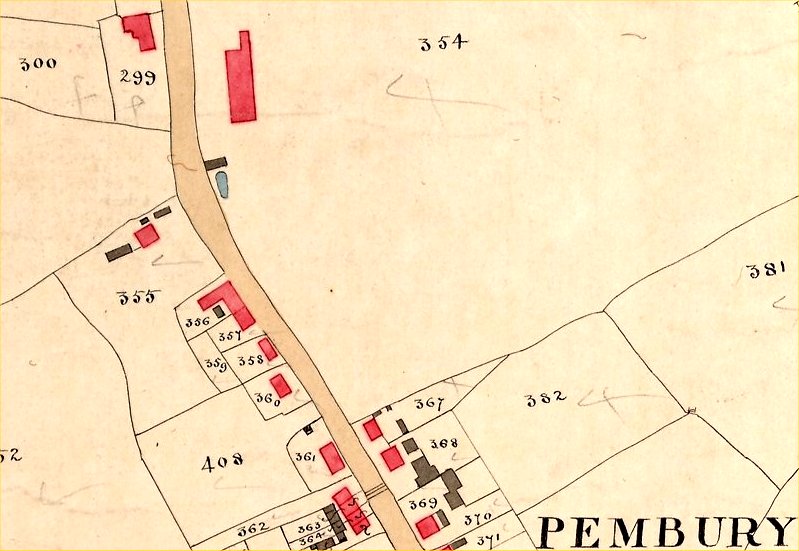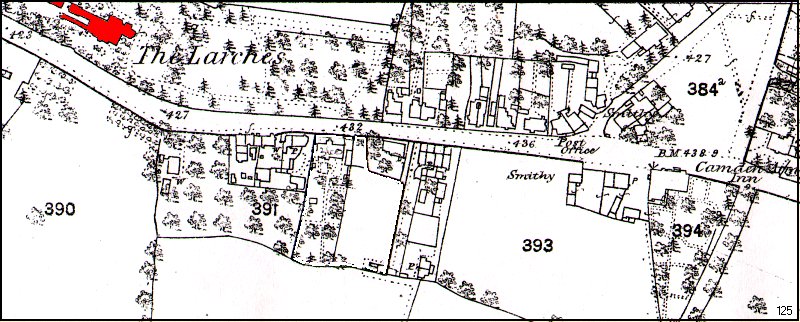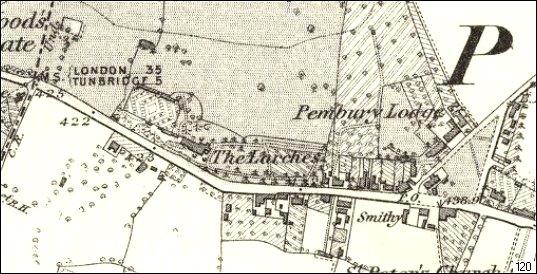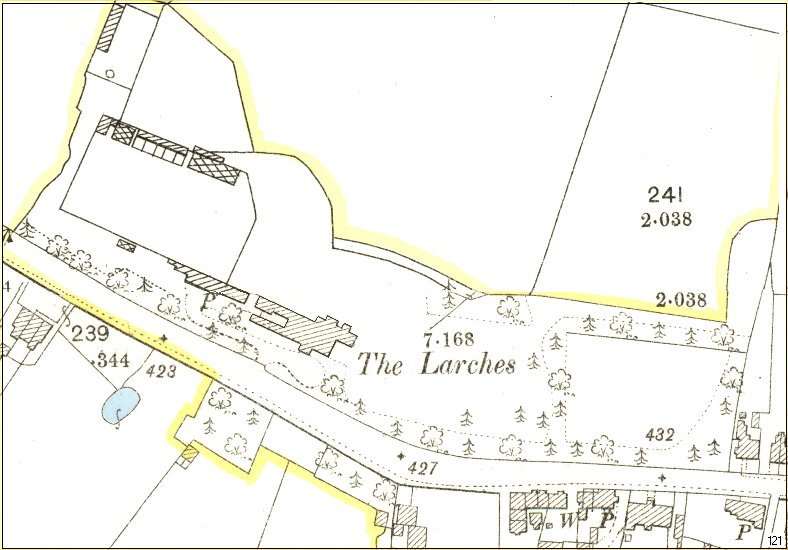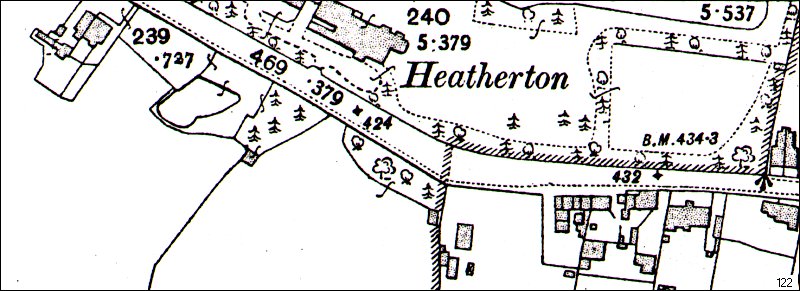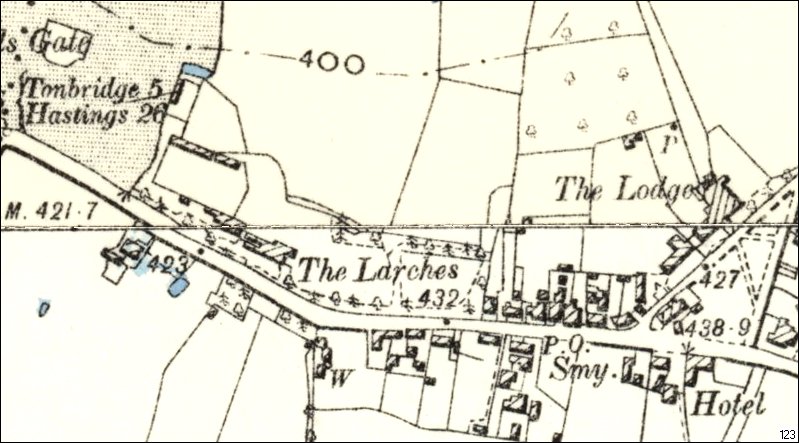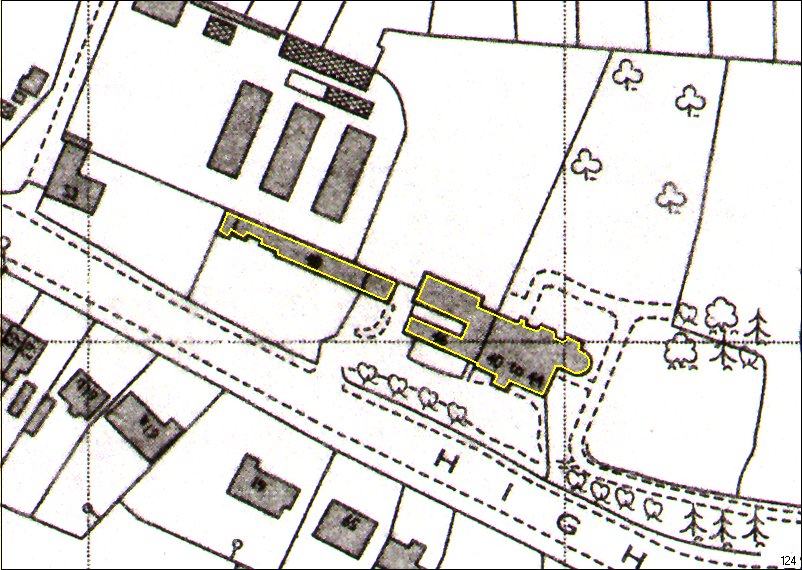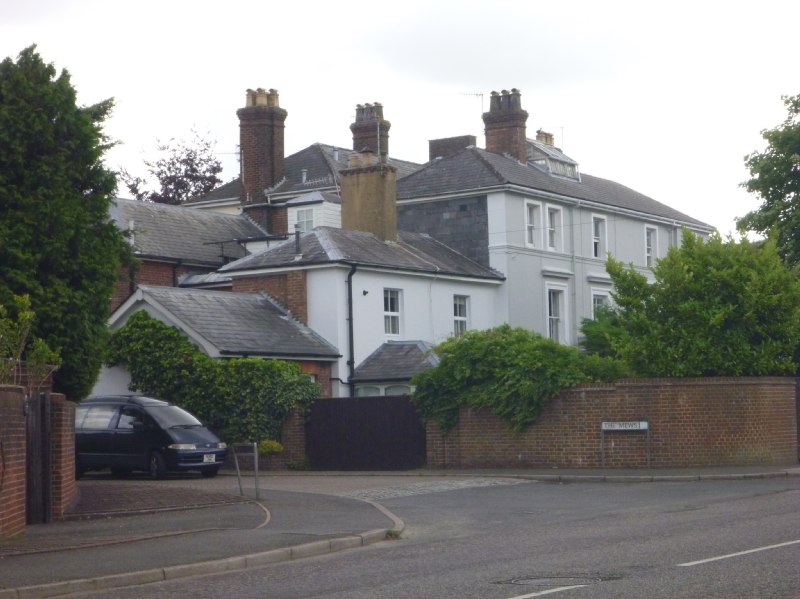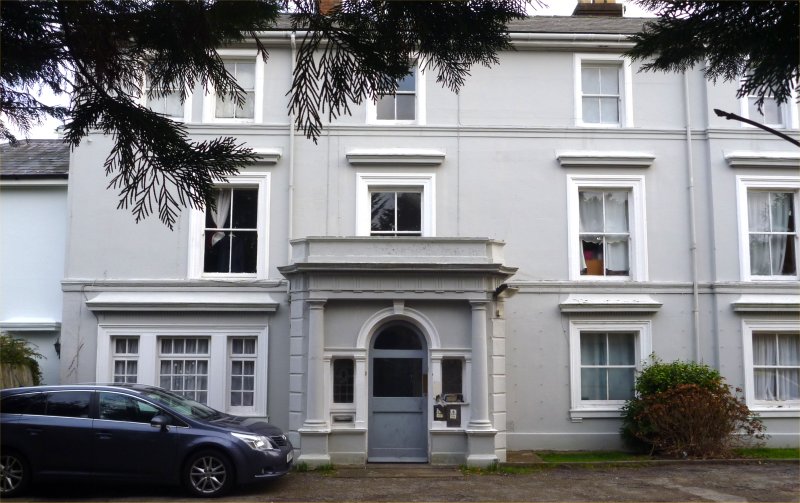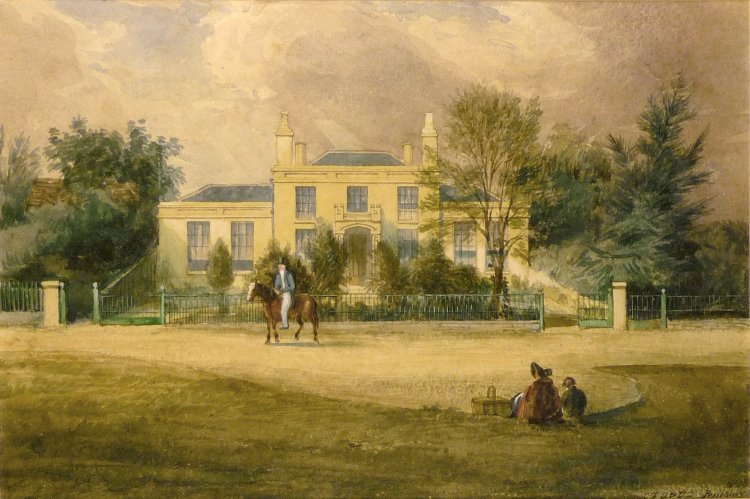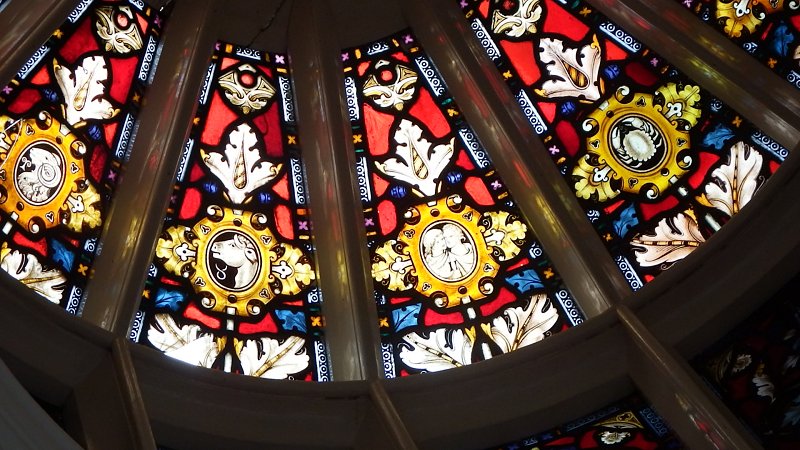Houses -
Larches, Heatherton, Sunhill,
Pembury Cottage (High St)
Larches , Heatherton , Sunhill, Pembury CottageThe house in the High Street formerly known as Pembury Cottage, The Larches and Heatherton, later Sunhill. Most maps show the estate with two buildings; a large 3 story house to the east and a long thin, single story, annex to the west. The modern roadway “The Mews” now cuts between them. There is some uncertainty as to the names and when they changed – some of the maps do not show a logical sequence. The Tithe Schedule of 1844 indicates that plot 354 was owned by John Standen with a tenant of Edward Smith Dakin. Notes by Kathryn Franklin indicate the house was rebuilt around 1850 as ‘The Larches’.
In 2013 Ian Kumekawa from Harvard University made contact enquiring about “The Larches” in Pembury. He was researching the life of an economist A.C. Pigou (1877-1959). The Larches was the childhood home of Pigou and some modern photos of the building were forwarded in 2016. The following text was sent by Ian – Here’s what I know (which is not very much at all): The Larches was the home for a time of the Pigou family. I know that they moved in at some point between 1878 and 1881 (inclusive). The 1881 census lists the family (father Clarence, mother Nora, children Arthur Cecil (b. 1877); Gerald (b.1878), daughter Kathleen (b.1881), and Nora’s sister) as well as a domestic staff of seven. Clarence was a man of some means and did not work. A.C. Pigou, about whom I am writing, came to be an economist of substantial importance. He went off to Harrow in 1890 and his friends remember returning with him to Pembury, where they would play cricket. Pigou’s mother died in 1902 and his father in 1905; by this time, they had moved out of the house and into London. To be published in 2017 by Princeton University
Press :
An image of an old house in Pembury was donated to this web site – see illustration below. It is on the Donated Photos / Buildings page and had been referred to as the Unidentified House or the Dodd House after its painter Charles T. Dodd. The painting was done by Charles Tattershall Dodd
in 1828, when he was 13, and inscribed “C T Dodd
Pembury”. In late 2018 Kathryn Franklin and others thought they had identified the house as an early instance of The Larches before re-modeling and enlargement. The following is Kathryn Franklin’s account of this early house. ************************************************************** House by C Dodds — Pembury Cottage — Sunhill Place
This appears to be a medium sized property of the early 19th century that would have suited someone of moderate means. It is clearly closely adjacent to the highway but seems to be in a rural setting. Note the square entrance porch. It is my contention, though it can probably never be proved conclusively, that this is Pembury Cottage which was rebuilt in c1855 and eventually became Sunhill Place as we know it today. We know that there was very little development along the High Street (or London Rd as it was then known) at this time which fits with the rural aspect. Also, the ‘To Let’ adverts from the 1830s, see below, indicate a property of this sort of size and calibre. Sunhill Place has an impressive square porch similar to the one in the painting which could be the one part of the original building to have survived. This early 19th century house definitely no longer exists in Pembury in its original state and if it had existed beyond 1855 surely there would be a photo of it somewhere.
Pembury Cottage This advert appeared in the Morning Post on 29 March 1830: 
In September 1830 a further, much more elaborate advert appeared in the same paper. This was clearly meant to appeal to a wider and more ’up-market’ clientele as it now mentions a coach house and stabling and there is reference to Tonbridge School. Also, the let is being handled in London by the owner (see Tithe details below where John Standen is stated as the owner), rather than locally by an agent. 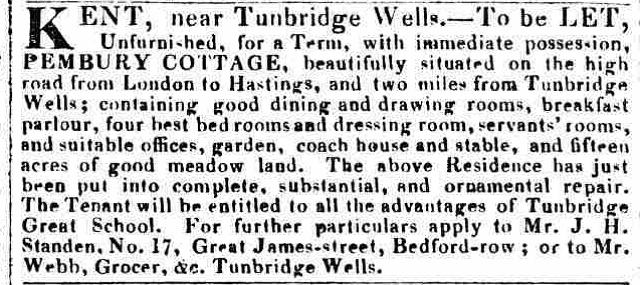
Four years later, in April 1834, yet another advert appeared. This time it was to be let furnished, if required, for a term of 4 years and there is mention of the views. 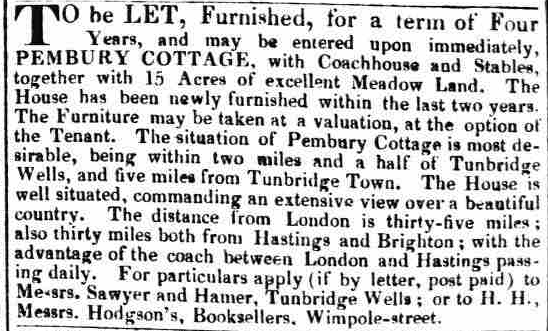
The final advert appeared in 1840 when the incentive was access to shooting across Lord Camden’s estates in Pembury. Details of the accommodation were a bit minimal.

Pembury Cottage is the house on plot 354 of the Tithe map which was created in about 1838, although the schedule was created over the period 1838-44. Plot 354 was 15-2-27 acres in size and is described as house, garden & meadowland and is situated on the north side of the High Street, exactly where Sunhill Place is now. The owner was John Standen, deceased, and the tenant Edward Smith Dakin. Mr Dakin was the local doctor and is described variously as Surgeon or General Practitioner. He was in Pembury at Upper Green in 1842 (Kelly’s), but does not appear in the 1841 census. (In 1851 he is a GP aged 38, born Colchester, at Upper Green, probably next door to the butcher). In 1848/49 there was a William Hurst living at Pembury Cottage. In 1851 William Henry Wall, solicitor, was already in London Rd, presumably at Pembury Cottage, although he is not thought to have bought it until 1855. I am not sure who he bought it from but possibly Henry Combridge. (Someone will have bought Mr Standen’s property from the executors.) Mrs Wall gave birth to a daughter at Knights Place in 1846 and further children in Pembury thereafter. It was sometime after 1855 that Mr Wall extended Pembury Cottage to what is there today and the family continued to own it until Mrs Wall died in 1889 (Mr Wall died in 1872, aged 55). During the Walls’ tenure it was known as The Larches. The property had several different names over the years and later known Occupiers are: 1895 – Clarence George Pigou 1900/1918 – Lady Harriet Camilla Adair and then her daughter, living at Heatherton 1924/46 – George Blackstock, living at Altnabrae (GB was a Scot) c1960 – it became known as Sunhill Place
Kathryn Franklin Jan 2019 The following pictures of the inside of the stained glass dome at Sunhill were taken by Martin Barrett in 2021 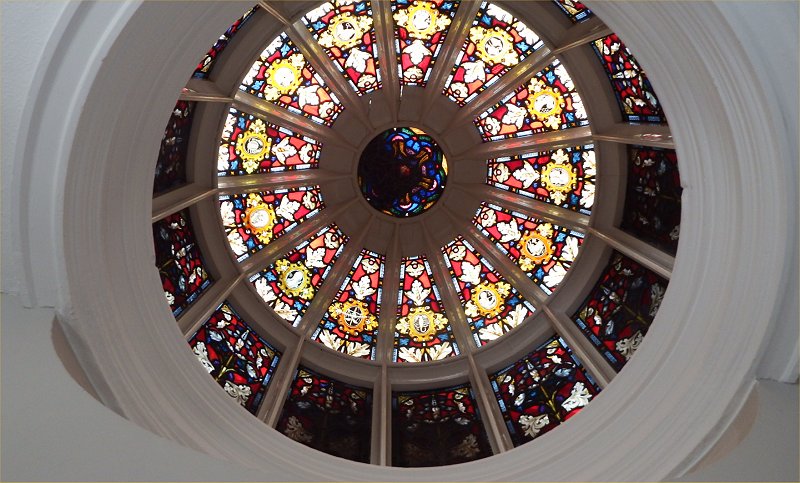 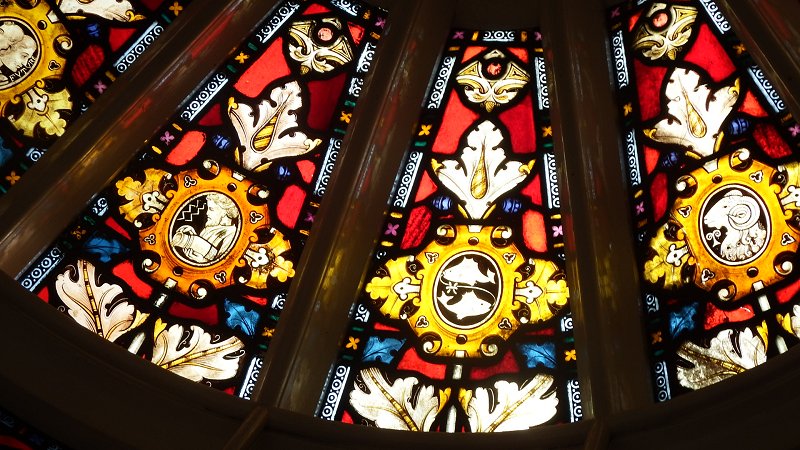 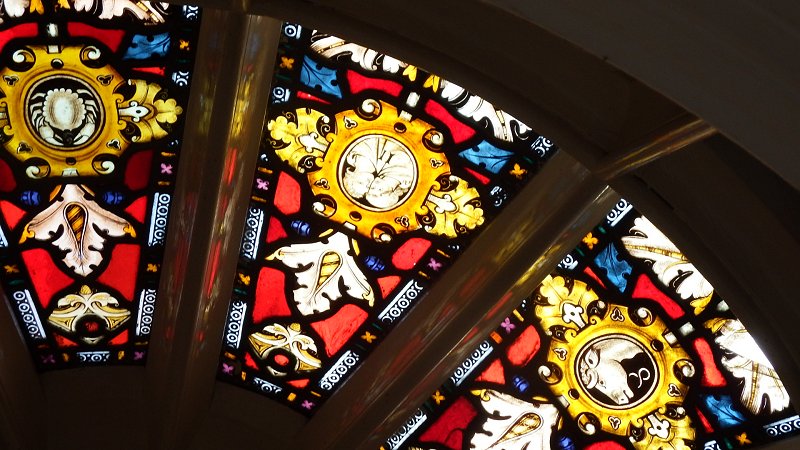 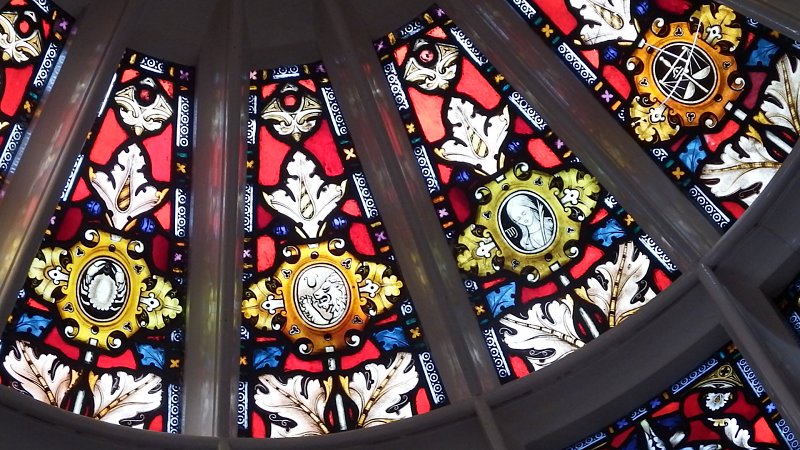
Houses - Larches / Sunhill
IMPORTANT !!! This needs your help. All contributions will be credited. If you have any further information or corrections please contact me – Tony Nicholls pemburyhistory@gmail.com |


